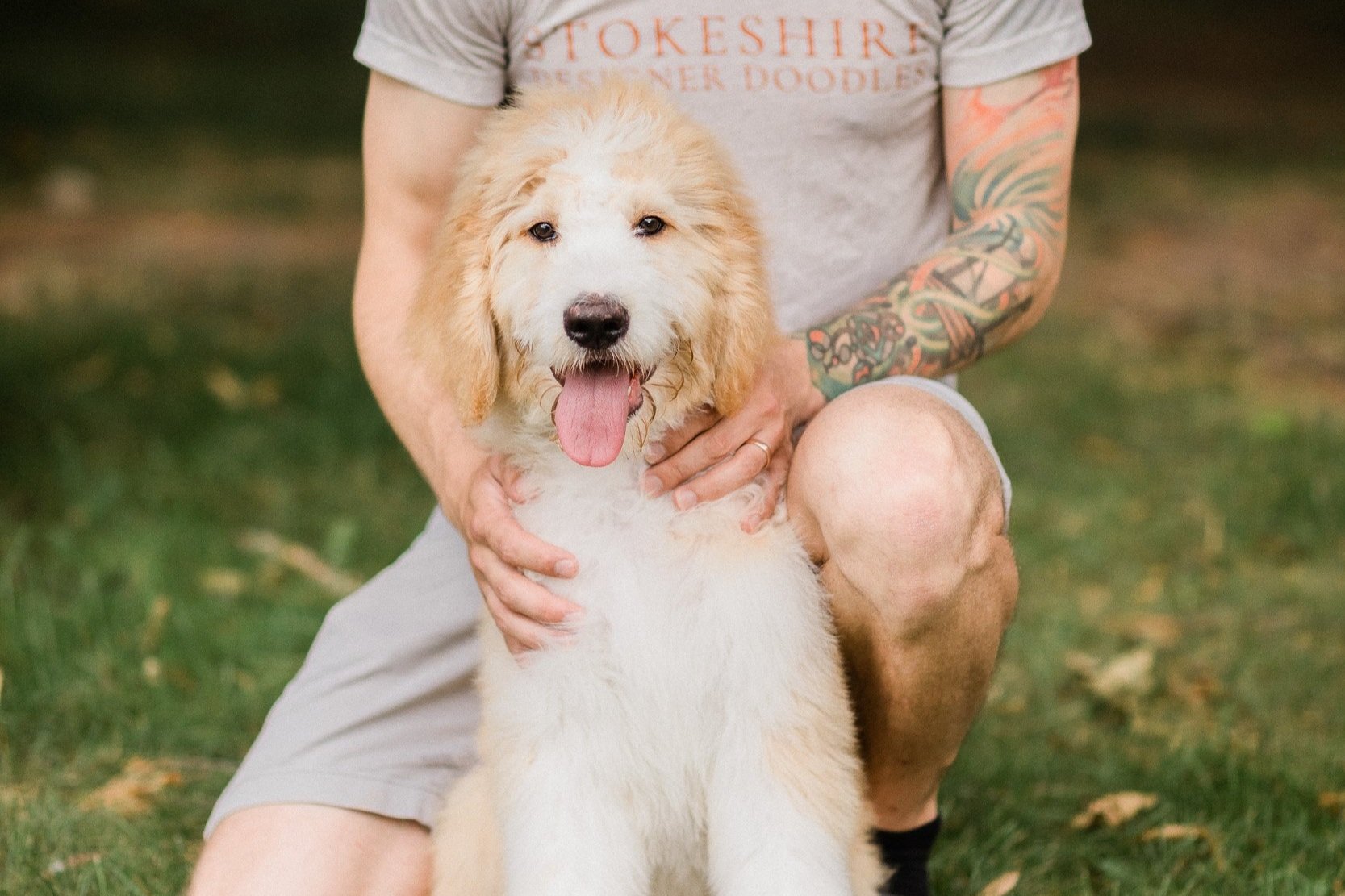Growing Pains in Larger Doodles: Understanding Panosteitis
Abstract: Panosteitis, commonly known as "growing pains," is a temporary but painful condition that affects the long bones of rapidly growing dogs—especially large-breed Doodle crosses like Goldendoodles and Labradoodles. This article explains the causes, symptoms, diagnosis, and treatment options for Panosteitis, helping Stokeshire families better understand and support their growing puppies through this phase.
Introduction Picture your vibrant, goofy Doodle pup suddenly slowing down, limping awkwardly, or simply not being their usual bubbly self. Heartbreaking, isn’t it? For owners of larger Doodle breeds like Goldendoodles or Golden Mountain Doodles, this scenario can point to Panosteitis, often referred to as “growing pains.” - eosinophilic panosteitis, juvenile osteomyelitis, enostosis, or simply "pano."
For owners of larger Doodle breeds like Goldendoodles or Golden Mountain Doodles, this scenario can point to Panosteitis—
Panosteitis is a self-limiting inflammatory condition that causes pain in the long bones during periods of rapid growth. Understanding this condition can help Stokeshire families provide comfort and the right care until it resolves.
What Is Panosteitis, and Why Are Larger Doodles at Risk? Panosteitis typically affects dogs between 5 and 18 months old and is most common in large and giant breeds. It causes inflammation within the bone marrow, leading to sudden, shifting lameness that often resolves on its own by the time the dog reaches 18–24 months of age.
Due to their genetics, Doodle crosses with Golden Retriever, Labrador, or Bernese Mountain Dog lineage are particularly prone to rapid growth, which may increase the risk for Panosteitis.
Symptoms of Panosteitis
Limping that shifts from leg to leg
Pain when limbs are touched, especially near long bones
Decreased activity and reluctance to walk or play
Appetite loss or behavioral changes
Seeking comfort or becoming more clingy
Symptoms often come and go over weeks, making it important to track any changes over time.
Diagnosis Your veterinarian may:
Perform a physical exam to locate pain
Use X-rays to detect increased bone density, a hallmark of Panosteitis
Rule out other conditions like hip dysplasia or fractures through imaging and bloodwork
Treatment Options While Panosteitis resolves on its own, managing pain and limiting activity is key:
Pain relief: Vets may prescribe NSAIDs such as Carprofen
Rest: Avoid jumping, running, or long walks during flare-ups
Comfort: Use orthopedic beds and warm compresses to ease discomfort
Nutrition: Feed a large-breed puppy formula with balanced protein, calcium, and phosphorus levels
Prevention and Management Tips
Control growth rate: Avoid high-protein or unbalanced diets
Maintain healthy weight: Prevent excess strain on developing joints
Exercise smart: Opt for short walks and low-impact play
Stay consistent with vet checkups
At Stokeshire, we are deeply committed to breeding healthy, well-rounded puppies. However, Panosteitis is a developmental condition that cannot be predicted or prevented through breeding practices. Because it is not a congenital defect but rather a normal, though sometimes uncomfortable, part of growth, it is not covered under our health guarantee.
Like growing pains in children, Panosteitis is a temporary phase that many large-breed puppies experience as they mature. While it can cause concern for pet owners, with proper rest, pain management, and supportive care, your Doodle will likely outgrow it without lasting effects. We are always here to help you navigate this season with encouragement, resources, and care.
Inflammation and Hip Dysplasia Confusion In some cases, inflammation from Panosteitis can mimic the early signs of very mild hip dysplasia. This can be concerning at first glance, especially on imaging, but it doesn’t necessarily mean a long-term joint issue is developing. As your puppy's growth stabilizes and inflammation decreases, these symptoms often subside entirely. This is why monitoring and reassessment over time are important before jumping to conclusions about a permanent condition.
Conclusion Panosteitis may be a tough phase, but it’s temporary. With rest, proper nutrition, and love, your Doodle will likely bounce back stronger and more energetic than ever. At Stokeshire, we’re here to support you through every bump, limp, and tail wag.
Have questions or concerns about your puppy’s growth? Reach out to our team—we’re always happy to help.
References: Weir, M., Hunter, T., & Yuill, C. (n.d.). Panosteitis in Dogs. VCA Animal Hospitals. Retrieved from https://vcahospitals.com/know-your-pet/panosteitis-in-dogs

